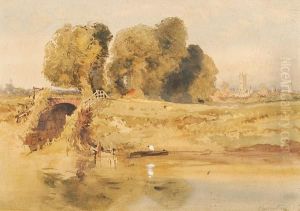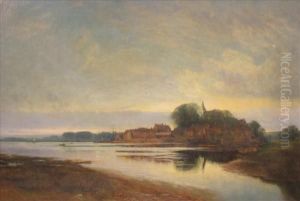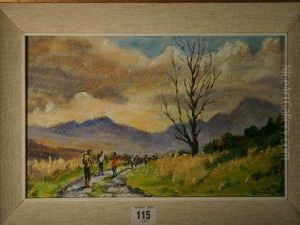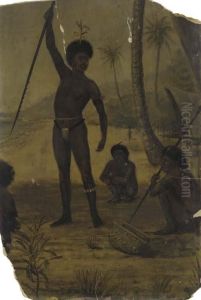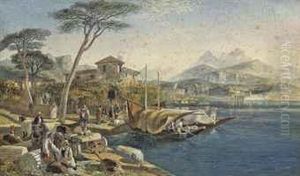Ernest, Major Gambier-Parry Paintings
Ernest Gambier-Parry was born in 1853 into a distinguished British family, known for their contributions to art, music, and public service. His father, Thomas Gambier-Parry, was an accomplished artist and philanthropist, which set a precedent for the artistic and altruistic path Ernest would later follow in his own life. Despite the expectations set by his family background, Ernest carved out a unique niche for himself, demonstrating a profound dedication to both the arts and military service, which was somewhat unconventional among his peers. This dual career path defined much of his life's work and legacy.
Ernest Gambier-Parry's artistic career was marked by his devotion to watercolor painting, a medium in which he excelled. His work often depicted landscapes and architectural subjects, capturing the beauty and tranquility of rural England and the European continent with a delicate touch and keen eye for detail. His artistic style was influenced by the broader movements of the time, including the Romantic and Pre-Raphaelite movements, although he maintained a distinctive voice that set his work apart from that of his contemporaries.
In addition to his artistic pursuits, Major Gambier-Parry had a significant military career. He served with distinction in the British Army, where his leadership and valor were recognized in various campaigns. His military service not only illustrated his commitment to his country but also provided him with unique experiences and perspectives that influenced his artistic work. The discipline and attention to detail required in the military echoed in his approach to painting, where precision and meticulousness were hallmarks.
Despite his accomplishments, Ernest Gambier-Parry remained relatively modest about his contributions to the arts and military service. His legacy is preserved through his artworks, which continue to be appreciated for their beauty and historical value. His life reflects the rich tapestry of late 19th and early 20th century Britain, a period of great change and cultural enrichment.
Ernest Gambier-Parry passed away in 1936, leaving behind a body of work that continues to inspire and captivate audiences. His dedication to both his artistic and military careers serves as a testament to his multifaceted personality and his deep commitment to the values of beauty, discipline, and service. Through his contributions, he exemplifies the ideal of the Renaissance man, adept in both the arts and the art of war.
